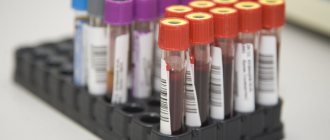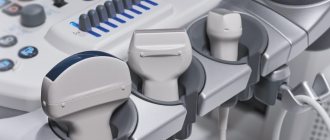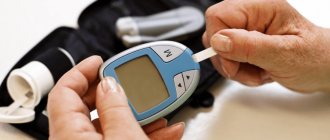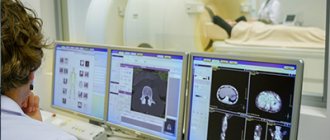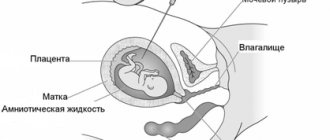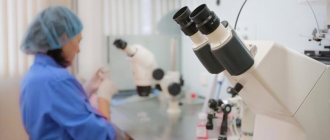THE IMPORTANCE OF ELECTROENCEPHALOGRAPHY IN THE STUDY OF EPILEPSY
Electroencephalography plays a key role in the study of epilepsy in patients. Every year, about 100 thousand new cases of this disease are registered around the world. Epilepsy often comes along with cerebral palsy.
The performed electroencephalography allows neurophysiologists to speak with complete confidence about the presence of “epilepsy” in the patient. Also, thanks to EEG, pathological activity in the brain is detected at an early stage, which creates difficulties for its normal functioning.
METHOD FOR IMPLEMENTING ELECTROENCEPHALOGRAPHY
An EEG does not cause harm or pain to the patient. To conduct the examination, the patient is placed in a comfortable chair. Then a number of electrodes are attached to the person using a helmet in the head area, which are connected to the device by wires. When analyzing the functioning of the brain, the device amplifies the biological impulses coming from the sensors many times and records the results obtained on computer technology.
No specific preparation is required to undergo an EEG. You just need to follow a few simple rules:
- The patient should not experience a strong headache while undergoing the test. There is a high chance that this will lead to incorrect EEG results.
- Before undergoing electroencephalography, the patient should wash his hair. This will create the best conditions for contact of the electrodes with the surface of the head. Due to this, the research results will be more accurate.
- Before visiting the doctor's office, remove jewelry and let your hair down.
- You should not stop taking medications while the brain is being examined, as this will knock the body out of its usual state and provoke an attack.
The results obtained should be interpreted taking into account the patient’s age, existing diseases, and the names of medications that were previously prescribed by doctors.
When can you not issue a driver’s EEG medical certificate?
A driver's medical certificate EEG is the only way to detect disorders in the functioning of the brain. However, normal test results cannot give an absolute guarantee that a completely healthy person in a critical situation will not behave inappropriately.
The only contraindications in the presence of which an EEG cannot be done for the driver’s commission are:
- recent head injuries;
- the presence of stitches, cuts on the head;
- large scratches in the area of the skull.
As long as the driver has any of the listed contraindications, he will not be able to undergo an EEG of the brain for a certificate from the traffic police. Therefore, he will not be issued a driver's license.
Features of EEG
Electroencephalography is an effective diagnostic method that thoroughly examines the brain. An examination is recommended for: degenerative organ damage, epilepsy, vascular diseases, dysontogenetic diseases, head injury, inflammatory processes, psychiatric pathologies, tumor processes.
If a patient has hereditary diseases of the central nervous system, then this diagnostic method is recommended. It is used for encephalopathies, regardless of their genesis, as well as functional disorders of the brain.
The use of the method is recommended to distinguish between epileptic and non-epileptic seizures. During the examination, the affected areas of the brain are determined. EEG is recommended to monitor the dynamics of drug treatment. Diagnostic manipulation provides an opportunity to resolve the issue of professional suitability.
An electroencephalogram is a safe and painless procedure, which allows it to be used to diagnose brain diseases in various categories of patients. Before the procedure, the patient is placed comfortably in a chair. Small electrodes are attached to the patient's head using a special helmet. The electrodes are connected to an electroencephalograph. The device amplifies potentials that are obtained from sensors and recorded in the computer memory.
An electroencephalogram does not require the patient to undergo a special preparatory stage. But, the patient must follow certain recommendations. The study should only be carried out on an empty stomach. Otherwise, unreliable results will be obtained.

In order to ensure high-quality contact between the electrodes and the scalp, you need to thoroughly wash your hair before conducting the examination. Before the study, the patient must continue to take medications prescribed by the doctor, which will eliminate the possibility of an attack.
After receiving the image on the screen, a qualified neurologist evaluates the result of the study, which allows you to make a correct diagnosis.
What allows you to install a driver's EEG
A driver's EEG is used to study the functioning of the brain by measuring the bioelectrical activity of certain parts of it. An EEG for a driver’s license makes it possible to identify the following diseases:
- chronic convulsions, epileptic seizures;
- disturbances in the blood supply to the brain;
- injuries, tumors;
- pathologies of cerebral metabolism;
- disorders caused by infectious inflammation of the central nervous system;
- age-related changes in the brain;
- sleep pathologies;
- impaired mental development;
- neurotic conditions.
EEG of drivers is considered the most reliable source of data regarding the psyche of a motorist. An EEG driver's certificate is issued quickly and is inexpensive.
Whether an EEG is needed for the driver’s commission depends on whether the driver has the following pathologies:
- fainting conditions;
- memory and concentration disorders;
- regular migraine;
- periodic dizziness;
- sleep disorders;
- fast fatiguability;
- mental disorders, neuroses.
Features of REG
Rheoencephalography is a non-invasive technique that is used to examine the brain. It is a safe and painless method for monitoring blood circulation in the brain. During the examination period, the changing value of the electrical resistance of the organ tissues is recorded during the period of passing through them a weak electrical current, which has a high frequency.
The examination is recommended for patients with: dizziness, headache, atherosclerosis, tinnitus, memory impairment.
In case of fainting and pre-fainting conditions, the use of a diagnostic method is recommended. Roencephalography is performed after traumatic brain injury. It is recommended for suspected arterial hypertension. During the period of vertebrobasilar insufficiency or osteochondrosis of the cervical spine, experts recommend REG.
Using this method, you can obtain information about the blood supply to the brain. Roencephalography determines the tone and elasticity of blood vessels. It is used to indicate the degree of their damage. The intensity of blood outflow from the cranial cavity is determined using this diagnostic measure. It is used in the postoperative period to clarify the quality of blood outflow.
To conduct the study, the patient is seated or laid on a couch. The room should have partial shade. Electrodes are attached to the head and pre-treated with a gel or saline solution.
During the manipulation, at the request of the doctor, the patient must turn his head to the right or left. The roencephalography film displays all changes in the bloodstream. The duration of the manipulation is from 20 to 30 minutes.

Who is a rheoencephalogram indicated for?
The difference between REG and EEG is in the essence of the methods. Rheoencephalography (hereinafter referred to as REG) is used to monitor cerebral circulation. The state of blood flow is assessed by passing a low, high-frequency current through the tissue and recording the electrical resistance of the tissue. In addition, this method provides information about the exact location of abnormalities in the vascular bed.
In what cases is it prescribed?
The range of application of this method is quite wide, and this is another indicator of how REG differs from EEG. The examination is informative in the following conditions:
- long-term headaches localized in different parts of the head;
- dizziness;
- vegetative-vascular dystonia;
- with tinnitus;
- memory disorders;
- fainting;
- atherosclerosis;
- hypertension;
- TBI (traumatic brain injury);
- vertebrobasilar insufficiency;
- osteochondrosis of the cervical spine.
A doctor may prescribe the procedure as a preventive measure for elderly people, especially if they have a history of chronic aggravating diseases. This will help avoid the development of undesirable disease and prevent the development of complications.
EEG for reference to the traffic police
A medical certificate is considered a mandatory document for obtaining a driver's license. Until 2014, to receive it, you had to visit the following offices:
- psychiatric;
- neuropathological;
- ophthalmological;
- drug treatment
When checked by a psychiatrist, the driver may be required to obtain an EEG certificate. The need to register it is due to the desire of the authorities to tighten control over driving safety. Whether an EEG will be needed for a certificate from the traffic police is determined by a neurologist or psychiatrist.
REG AND EEG - IS THERE A DIFFERENCE?
These two research methods are common when examining the human brain. At the same time, to give a more accurate assessment of brain pathology, EEG is used. It is especially good when the patient has epilepsy. Often, EEG is the main method of conducting research. The remaining methods are accompanying and are, as a rule, formal in nature.
Important. The actions of EEG are broader than REG. When using EEG, doctors have a chance to identify a greater number of pathologies than when using REG.
During loss of consciousness, frequent headaches and severe fatigue over a short period of time, it is best to use EEG, as a method that has proven itself to be the best.
To make the right choice of research method, you need to proceed from what type of pathological process you strongly suspect. There are often cases when EEG and REG complement each other with maximum efficiency. In these cases, both methods are used in a complex state. This will allow you to make an accurate diagnosis as quickly as possible.
Where is it possible to find out the price for an EEG certificate and issue a document7
Finding out how much an EEG costs for a certificate from the traffic police and getting tested is possible not only in a budget clinic. The procedure can be performed at any medical institution licensed to issue medical certificates for a driver’s license. You need to issue an EEG certificate for the traffic police only in licensed establishments - otherwise the document will be considered invalid.
The motorist has 2 options. 1st – budget clinic. In addition to information about the EEG for reference to the traffic police prices, you need to clarify whether the institution has the required equipment. Typically, going to a local clinic does not guarantee saving time and money. It all depends on the year of production of the equipment used, the queue that must be followed.
It is also possible to find out the price of an EEG certificate and undergo the procedure at a commercial medical center. One of these institutions is the Latum Clinic. To get to it in the Northern Administrative District, you need to get off at the Seligerskaya metro station or the st. 800th anniversary of Moscow. You can also get to the clinic along Korovinskoye Highway, Dmitrovskoye Highway. In addition, you can check with the institution about the EEG, how the procedure is carried out, and what the validity period of the EEG certificate is. The main advantages of the Latum clinic are:
- fast completion of the procedure;
- the ability to make an appointment at any convenient time;
- high quality of medical services;
- You can pay for the EEG either in cash or by card.
So, you found out about a certificate from the traffic police whether an EEG is needed. Before going for an examination, make sure that you:
- did not take medications the day before;
- did not drink alcohol;
- did not drink drinks that contain caffeine.
On the day of the examination, you need to wash your hair and get rid of stress - otherwise the results of the examination may be distorted. This is due to how the EEG procedure of the brain is carried out. The only documents required are a passport. Registration of a medical certificate takes about a quarter of an hour.
The need to issue this certificate has created a new expense item for motorists. There is no point in hoping that you can save money by visiting a budget clinic. An electroencephalogram is always a paid procedure, and the only question is the cost of the examination.
CONTRAINDICATIONS
Brain studies are contraindicated during periods when a woman is preparing to become a mother. If the condition of the skin is poor, it is not advisable to perform REG and EEG before starting the electrodes.
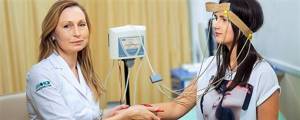
The client's complete refusal to undergo testing also does not improve the therapeutic intervention. A recent disease of the skin and hair in those areas of the head where electrodes are supposed to be attached to a person also does not contribute to the effective treatment of the patient.
EEG and REG help medical workers prevent brain disease in a timely manner. Timely identified pathology will help to avoid serious problems with the human brain and begin timely treatment. Overall, these are vital factors that will help a person save his precious life. EEG and REG provide accurate answers to the manifestations of pathology in the brain. Correctly initiated treatment will be a lifeline for people suffering from these diseases.
